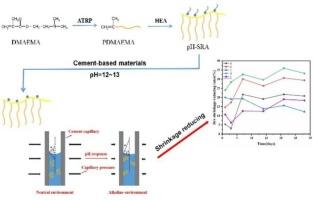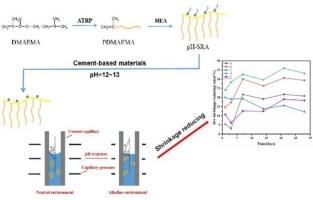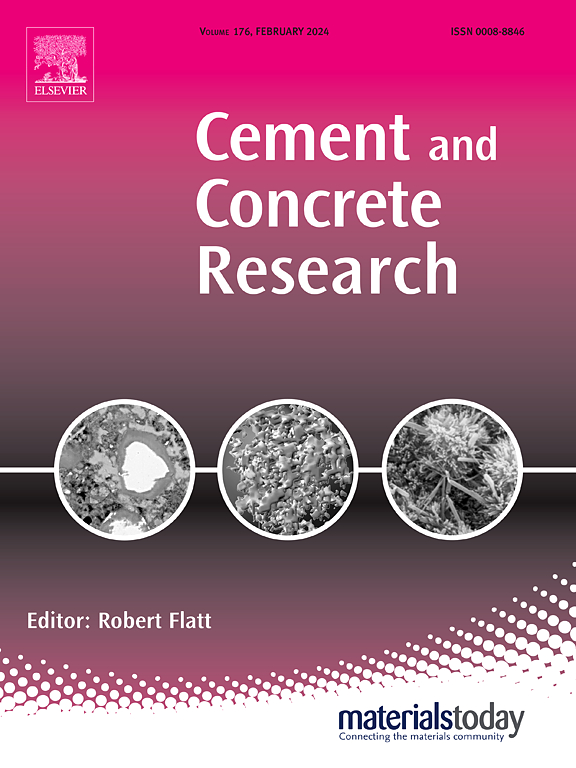一种减少水泥基材料收缩的新方法:ph响应外加剂从亲水性到疏水性的转变
IF 13.1
1区 工程技术
Q1 CONSTRUCTION & BUILDING TECHNOLOGY
引用次数: 0
摘要
降低混凝土开裂风险的有效途径之一是通过添加减缩掺合料(SRA)来减少干燥收缩,这一般是基于降低表面张力的机理。根据Young-Laplace方程,增大接触角的机理也应该是非常有效的。然而,外加剂疏水性的提高必然导致相容性和有效性的降低,这一问题至今仍未得到解决。本研究旨在通过设计一种具有ph响应特性的新型外加剂,通过水泥孔隙溶液的碱性环境,自发地实现亲水性向疏水性的转变,为降低毛细压力以减少水泥基材料的收缩提供一种新的途径。水泥砂浆具有良好的ph响应和收缩性能。最重要的是,这种新方法被证明是有效的,在抑制水泥基材料的收缩和开裂方面具有很大的潜力。本文章由计算机程序翻译,如有差异,请以英文原文为准。


A novel approach to reduce the shrinkage of cement-based materials: pH-responsive admixture from hydrophilic to hydrophobic transformation
One of the effective ways to reduce the risk of concrete cracking is the reduction of drying shrinkage by adding shrinkage-reducing admixture (SRA), which is generally based on the mechanism of reducing surface tension. According to Young-Laplace equation, the mechanism of increasing contact angle should also be very effective. However, the increase of hydrophobicity of admixture would inevitably lead to the decrease of compatibility and effectiveness, which still has been unsolved. This study aims to provide a novel approach for decreasing capillary pressure to reduce the shrinkage of cement-based materials by designing a new admixture with pH-responsive characteristics, which can spontaneously achieve the hydrophilic to hydrophobic transformation through the alkaline environment of cement pore solution. Excellent pH-response and shrinkage reduction in cement mortars were shown. Most importantly, this novel approach was proved to be effective, which had great potential in inhibiting the shrinkage and cracking of cement-based materials.
求助全文
通过发布文献求助,成功后即可免费获取论文全文。
去求助
来源期刊

Cement and Concrete Research
工程技术-材料科学:综合
CiteScore
20.90
自引率
12.30%
发文量
318
审稿时长
53 days
期刊介绍:
Cement and Concrete Research is dedicated to publishing top-notch research on the materials science and engineering of cement, cement composites, mortars, concrete, and related materials incorporating cement or other mineral binders. The journal prioritizes reporting significant findings in research on the properties and performance of cementitious materials. It also covers novel experimental techniques, the latest analytical and modeling methods, examination and diagnosis of actual cement and concrete structures, and the exploration of potential improvements in materials.
 求助内容:
求助内容: 应助结果提醒方式:
应助结果提醒方式:


